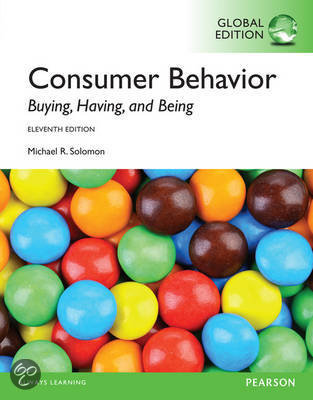Samenvatting
Summary Consumer Behavior Hoofdstuk 2 t/m 4
- Vak
- Instelling
- Boek
Dit is een samenvatting van de hoofdstukken 2 t/m 4 van het boek Consumer Behavior (11de druk - Global Edition) van Michael R. Solomon. Alle dikgedrukte begrippen zijn hierin samengevat. Ook staan er voorbeelden in, om de begrippen verder te verduidelijken. Moeilijke begrippen zijn zowel in het Eng...
[Meer zien]













